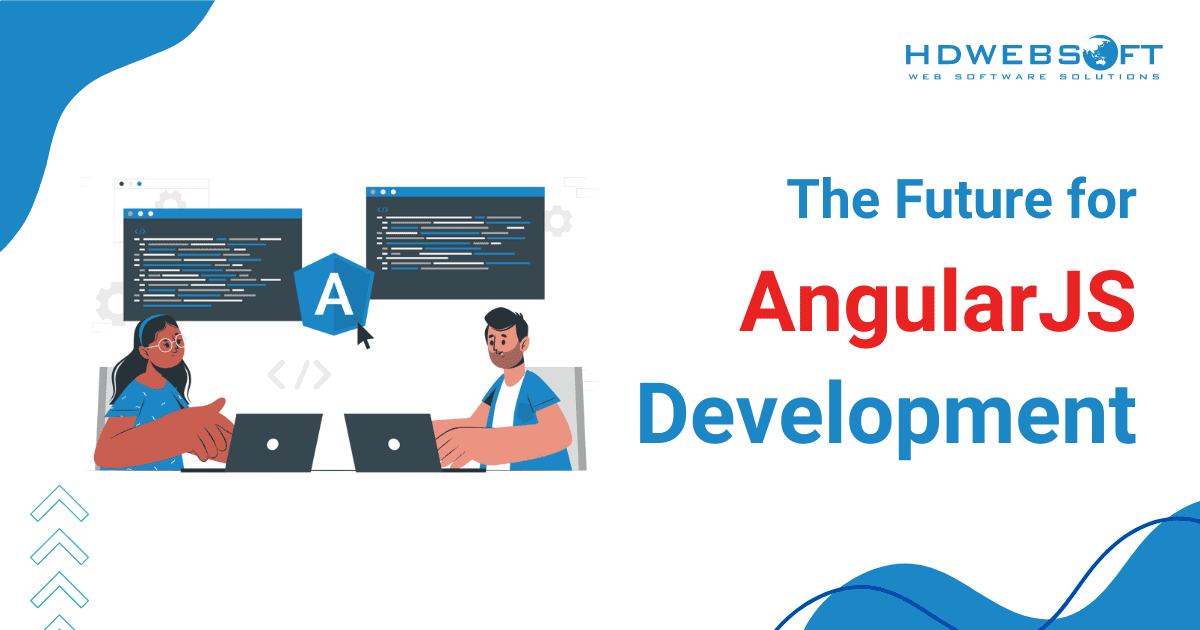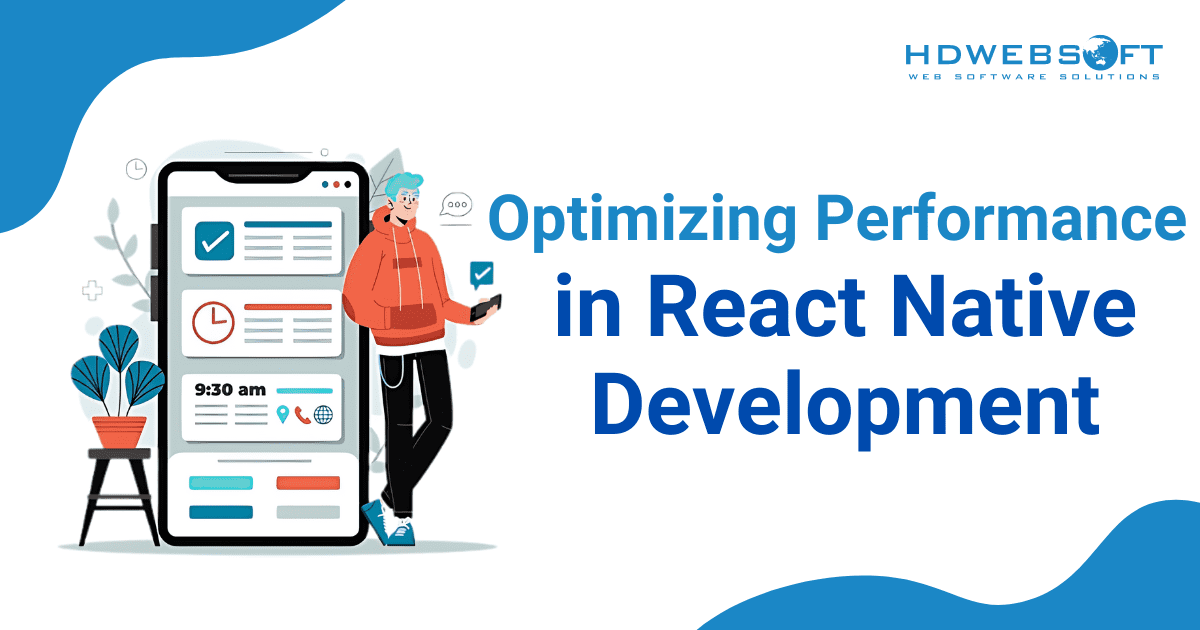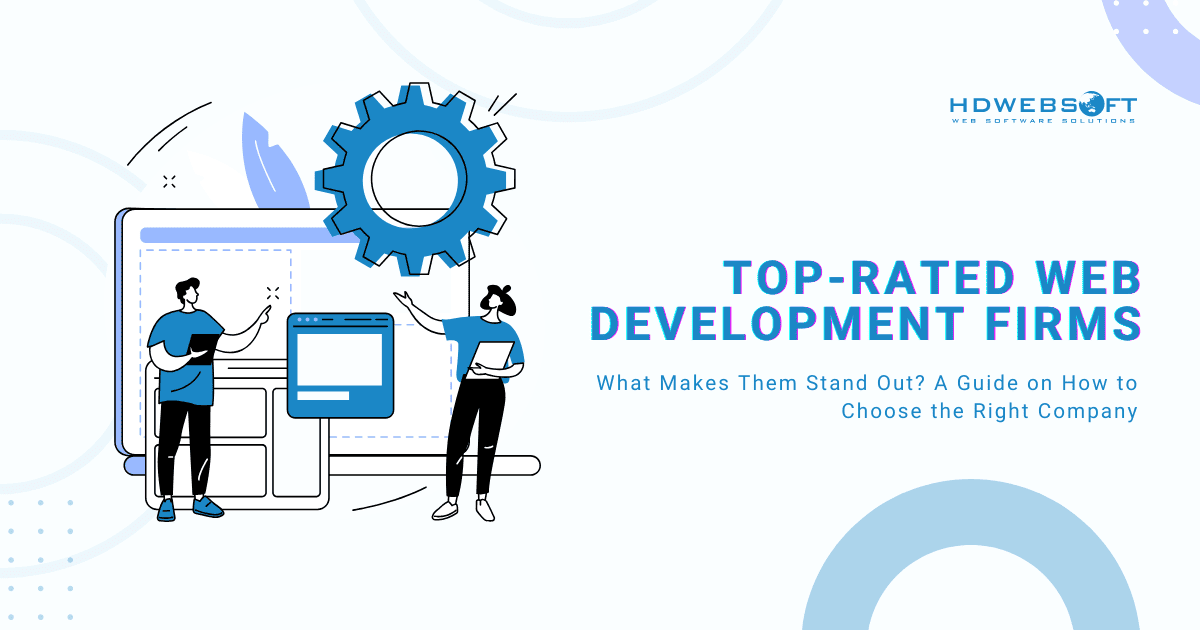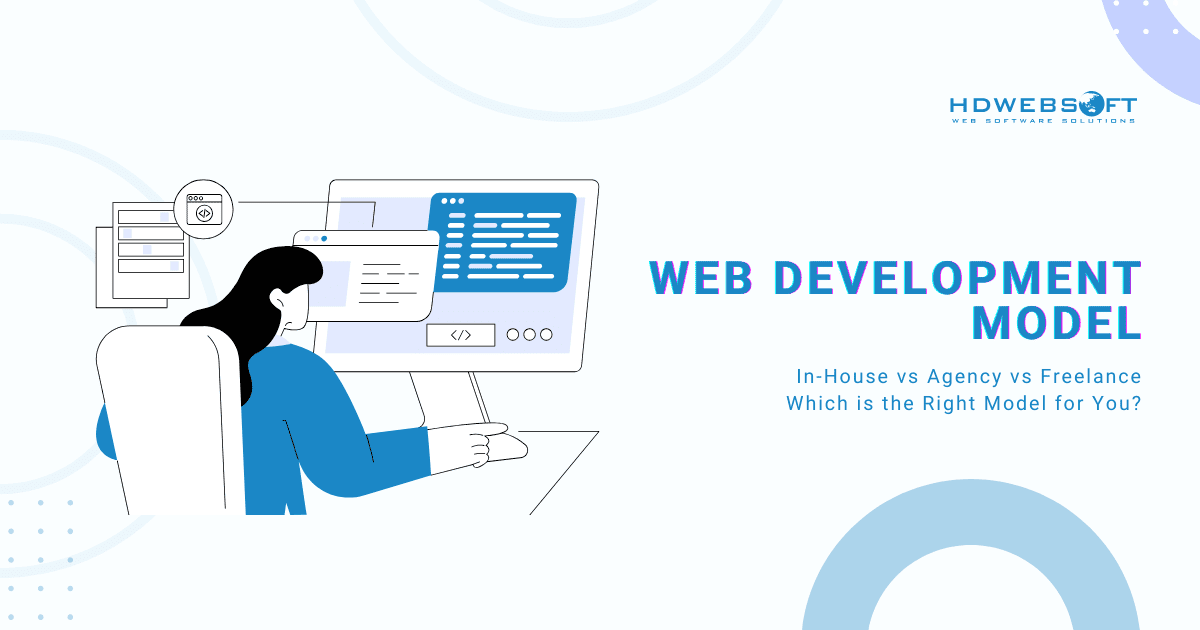
In-House vs Agency vs Freelance: Which Web Development Model is Right for You?
Choosing the right web development model can make or break your digital project before a single line of code is written. Whether you’re launching a startup, scaling an enterprise, or refreshing your online presence, the structure you choose for building your website or application plays a critical role. It directly affects your budget, influences your timeline, shapes your product quality, and determines your long-term maintenance capabilities.
As businesses become increasingly dependent on digital solutions, understanding the nuances of different hiring options is more important than ever. Whether you choose to hire in-house developers, partner with top-rated web development firms, or contract freelancers, each option comes with distinct advantages and challenges.
Throughout this guide, we’ll explore three primary approaches to web development. Each with distinct advantages and limitations that align differently with various business needs and objectives.
- 1) Understanding the Three Core Web Development Models
- 2) In-House Web Development Team
- 3) Agency Web Development Model
- 4) Freelance Web Development Model
- 5) Comparing Web Development Models: Key Factors
- 6) Critical Considerations When Selecting Your Web Development Model
- 7) Hybrid Approaches: Combining Models Strategically
- 8) Conclusion
Understanding the Three Core Web Development Models
Before diving into comparisons, it’s essential to recognize what each web development model entails. These approaches represent fundamentally different ways of accessing technical talent and managing your development process.
An in-house website development model involves recruiting full-time employees who work exclusively for your organization, becoming integrated members of your team. Meanwhile, the web development agency connects you with established firms that provide comprehensive services through their existing teams and processes. Finally, the freelance web development services offer access to independent contractors who work on a project basis. They deliver specialized skills without long-term employment commitments.
Each model serves different business scenarios, and understanding their core characteristics helps frame the decision-making process ahead.
In-House Web Development Team
Building your own team of developers represents a significant commitment that transforms how your organization approaches technology. This website development model requires careful consideration of both immediate costs and long-term benefits. As the decision is to bring development capabilities in-house, it fundamentally reshapes your operational structure and company culture.
What It Means
Building an in-house web development model means recruiting developers, designers, and technical professionals as full-time employees within your organization. These team members work exclusively on your projects, attend company meetings, and become embedded in your corporate culture.
Rather than outsourcing development work, you create an internal department dedicated to building and maintaining your digital assets. This approach requires investment in recruitment, onboarding, equipment, workspace, and ongoing professional development for your technical staff.
Key Advantages
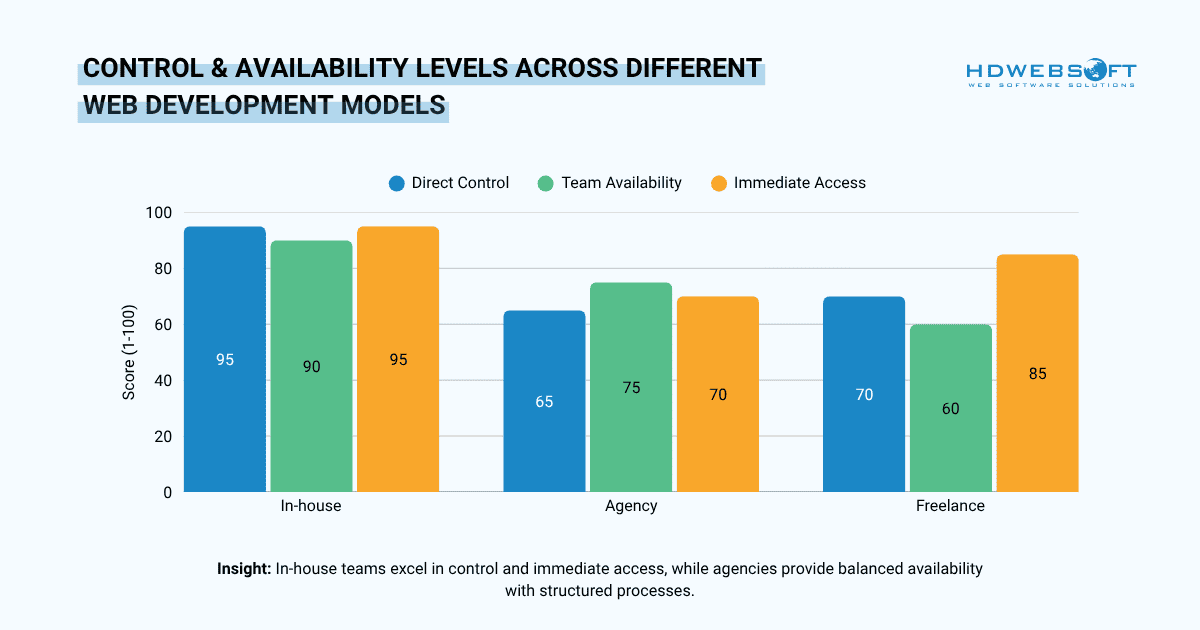
control and availability levels across different web development model
Direct oversight represents perhaps the most significant benefit of the in-house model. Your developers sit in the same office (or video calls) as other departments, facilitating immediate communication and collaboration. Consequently, they develop deep knowledge of your business operations, customer base, and strategic objectives that external teams rarely achieve.
Furthermore, your internal team remains available whenever urgent issues arise or last-minute changes become necessary. Hence, the scheduling constraints that often accompany external contractors will be eliminated.
Organizational Value
Additionally, using an in-house web development model creates lasting organizational value. The knowledge your developers accumulate stays within your company rather than walking out the door when a contract ends. Over time, this institutional knowledge becomes increasingly valuable, particularly for complex systems with unique business logic.
Moreover, full-time employees typically demonstrate stronger commitment to your company’s success compared to contractors juggling multiple clients simultaneously.
Main Drawbacks
Despite these advantages, the internal website development model carries substantial financial obligations.
Salaries for skilled developers continue regardless of project volume, creating fixed costs that persist even during slower periods. Beyond base compensation, employers must provide benefits, equipment, software licenses, training, and workspace, as these expenses quickly accumulate. For smaller businesses or those with fluctuating development needs, these ongoing costs can prove prohibitively expensive.
The Ongoing Battle for Developer Talent
Recruitment challenges present another significant hurdle when choosing the right web development model. The competition for talented developers remains fierce, particularly in specialized areas like AI integration, blockchain, or advanced security. Finding qualified candidates takes time and resources, and once hired, retention becomes an ongoing concern as competitors continuously court top talent.
Additionally, internal teams naturally develop within certain technology stacks and methodologies. It’s potentially creating blind spots or resistance to adopting newer approaches that external specialists might bring.
Best Suited For
The in-house website development model works best for:
- Organizations with continuous, ongoing development requirements rather than sporadic projects, ensuring your team remains productive and cost-effective throughout the year.
- Companies building complex, proprietary platforms that benefit tremendously from dedicated teams who understand every architectural decision and business logic nuance.
- Large enterprises with substantial budgets that can afford the fixed costs while gaining the control and integration benefits that come with permanent staff.
- Businesses in highly regulated industries that often prefer in-house teams for security, compliance, and intellectual property protection reasons.
Agency Web Development Model
Partnering with professional firms offers a middle ground between full-time employment and individual contractors. The agency web development model has grown increasingly popular as businesses seek to balance expertise, accountability, and cost-effectiveness without the long-term obligations of permanent staff.
What It Means
Partnering with an agency website development model involves contracting specialized firms that provide complete development services through their established teams. These agencies employ diverse professionals – developers, designers, project managers, QA testers – who collaborate on your project. Meanwhile, the agency handles team management, resource allocation, and quality assurance.
Instead of hiring individual developers, you’re essentially renting access to an entire operation. This operation comes with proven processes, established workflows, and collective expertise gained from multiple projects across various industries.
Key Advantages
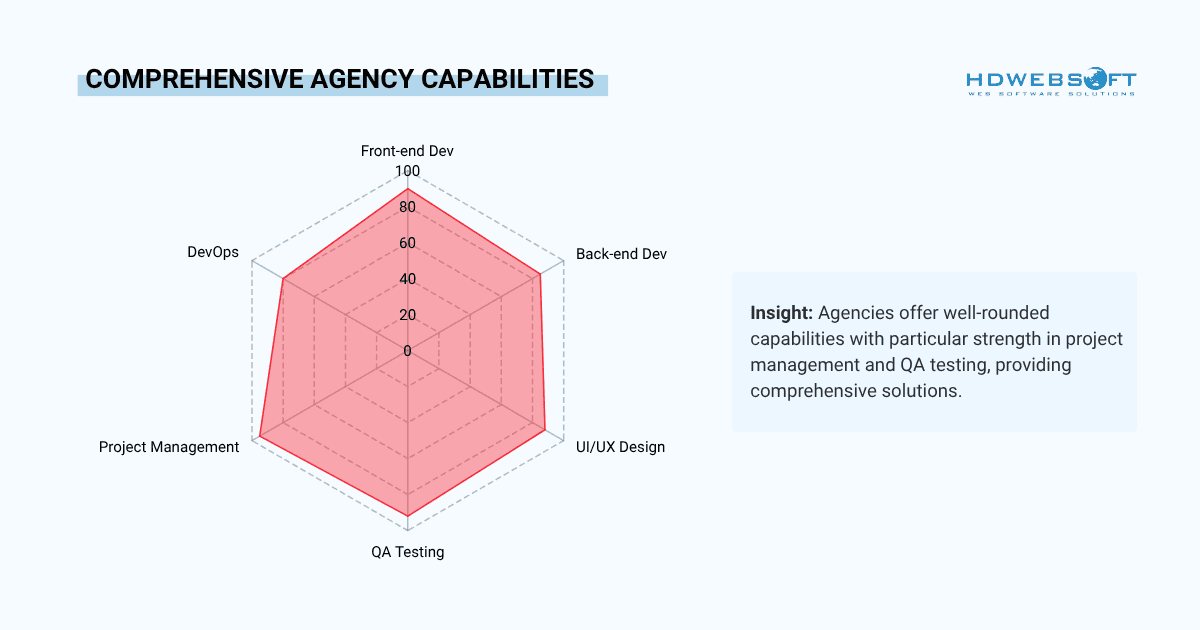
Access to diverse expertise stands out as the primary strength of the agency website development model. Instead of hiring separate specialists for front-end and back-end development, UX design, and QA, agencies provide these skills as an integrated package, all covered under the web development model.
This breadth of talent proves particularly valuable for complex projects requiring multiple specializations that would be impractical to hire individually. Moreover, established agencies bring refined processes developed across dozens or hundreds of previous projects, reducing the risk of common pitfalls.
Scalability
Another compelling advantage calls for scalability. When your project requires additional resources, agencies can quickly assign more team members without lengthy recruitment processes. Conversely, as projects wind down, you reduce costs without managing layoffs or reassignments.
Additionally, agencies typically offer account management services that handle scheduling, communication coordination, and project oversight. As a result, it’ll reduce the management burden on your internal staff. This structured approach often results in more predictable timelines and deliverables compared to less formal arrangements.
Main Drawbacks
However, this model typically commands premium pricing compared to individual freelancers. The comprehensive service, established reputation, and operational overhead agencies maintain all factor into higher hourly or project rates.
For budget-conscious businesses or straightforward projects, these costs may exceed what’s necessary for their chosen web development model. Furthermore, working through an agency introduces additional communication layers between you and the developers actually writing code. Potentially, it’ll slow down decision-making or create misunderstandings.
Limited Control
Another consideration involves competing priorities. While agencies assign dedicated teams to your project, they simultaneously manage multiple clients. During peak periods or conflicts, resources might be redirected, potentially affecting your timeline.
Furthermore, you have limited control over which specific individuals work on your project. If a particularly talented developer leaves the agency, you cannot prevent their departure from impacting your work. The relationship remains fundamentally transactional rather than the deeper partnership that in-house teams provide.
Best Suited For
The agency website development model serves:
- Mid-sized to large projects requiring comprehensive capabilities but lacking the budget or need for a permanent team. Hence, agencies become the perfect middle-ground solution.
- Businesses seeking reduced management overhead while maintaining professional quality, as agencies handle team coordination and project management internally.
- Organizations launching significant digital initiatives that benefit from the agency web development model’s structured approach and proven methodologies.
- Companies need to move quickly without time for lengthy recruitment processes. So, leveraging agencies’ ready-made teams to accelerate development and meet tight deadlines.
Freelance Web Development Model
Independent contractors represent the most flexible and accessible entry point into professional web development. The freelance website development model has exploded in popularity thanks to global platforms connecting businesses with skilled developers. However, this accessibility comes with unique considerations that differ significantly from team-based approaches.
What It Means
The freelance model connects businesses directly with independent contractors who work on specific projects or tasks. These self-employed professionals operate their own businesses, managing their schedules, rates, and client relationships. Unlike agencies, freelancers work individually (though they may occasionally collaborate with other freelancers on larger projects).
Notably, communication happens directly between you and the developer, creating streamlined decision-making without organizational intermediaries. Engagements typically focus on defined deliverables with clear start and end points rather than ongoing relationships.
Key Advantages
Cost-effectiveness represents the most obvious benefit of the freelance web development model. Without agency overhead or full-time salary obligations, freelancers often charge substantially less than other options. Therefore, professional development becomes accessible even for tight budgets.
This pricing advantage proves particularly valuable for startups, small businesses, or specific technical tasks that don’t justify larger investments. Furthermore, the direct relationship eliminates communication layers. When you have questions or want changes, you speak immediately with the person doing the work.
Agility
Flexibility also characterizes freelance arrangements. Need someone for three weeks to build a specific feature? Freelancers accommodate such limited engagements without requiring long-term commitments. This model works perfectly for businesses with sporadic development needs who can’t justify permanent staff.
Plus, freelancers often bring highly specialized skills developed across diverse projects and industries. If you need expertise in a particular framework, integration, or technique, you can easily find specialized freelancers in that niche. This approach is often more effective than hiring generalists who only dabble in many areas.
Main Drawbacks
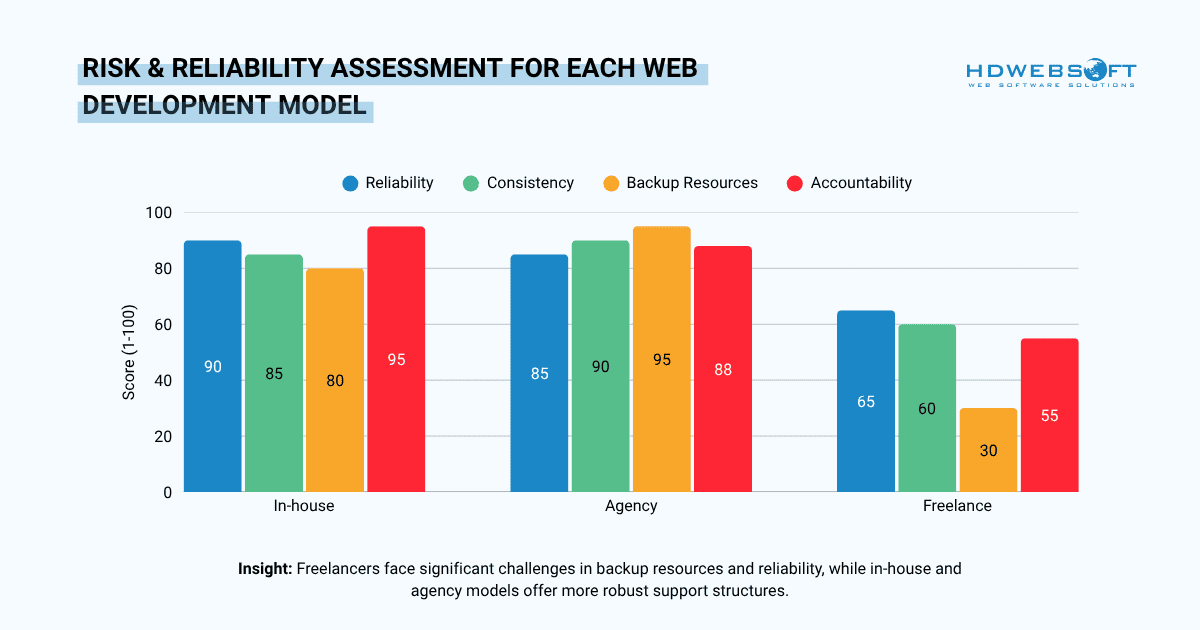
risk and reliability assessment for each web development model
The freelance web development model carries inherent risks related to individual dependency. When your freelancer gets sick, takes a vacation, or accepts a better opportunity, your project halts without backup resources. This single point of failure creates vulnerability that teams and agencies mitigate through redundancy.
Quality and reliability also vary dramatically among freelancers. While some deliver exceptional work, others overpromise and underdeliver, making vetting crucial but sometimes tricky.
Reliability
Accountability structures prove less robust with freelancers compared to agencies or employees. If disputes arise about quality, timelines, or scope, you lack organizational escalation paths or established conflict resolution processes. Additionally, freelancers juggle multiple clients simultaneously, and during busy periods, your project might receive less attention than you’d prefer.
Long-term support presents another challenge. Freelancers frequently move between projects, so finding the same person for maintenance or updates months later isn’t guaranteed. Thus, documentation and knowledge transfer become critical when working with freelancers who won’t be available indefinitely.
Best Suited For
The freelance web development model fits:
- Startups and small businesses with limited budgets but real development needs that require professional execution without enterprise-level pricing.
- Projects with clearly defined scopes that don’t require full team involvement. For example, tasks might include building a landing page, creating a specific feature, fixing bugs, or implementing an integration.
- Businesses that possess some internal technical knowledge to evaluate work quality and manage projects effectively. Those companies are able to maintain successful outcomes when leveraging freelance talent.
- Situations requiring specialized expertise for short durations that favor freelancers over the overhead of hiring full teams or agencies for limited engagements.
Comparing Web Development Models: Key Factors
Understanding how these models stack up against each other provides clarity when making your decision. The table below offers a snapshot comparison. However, the real value emerges when you map these factors against your specific business context and project requirements.
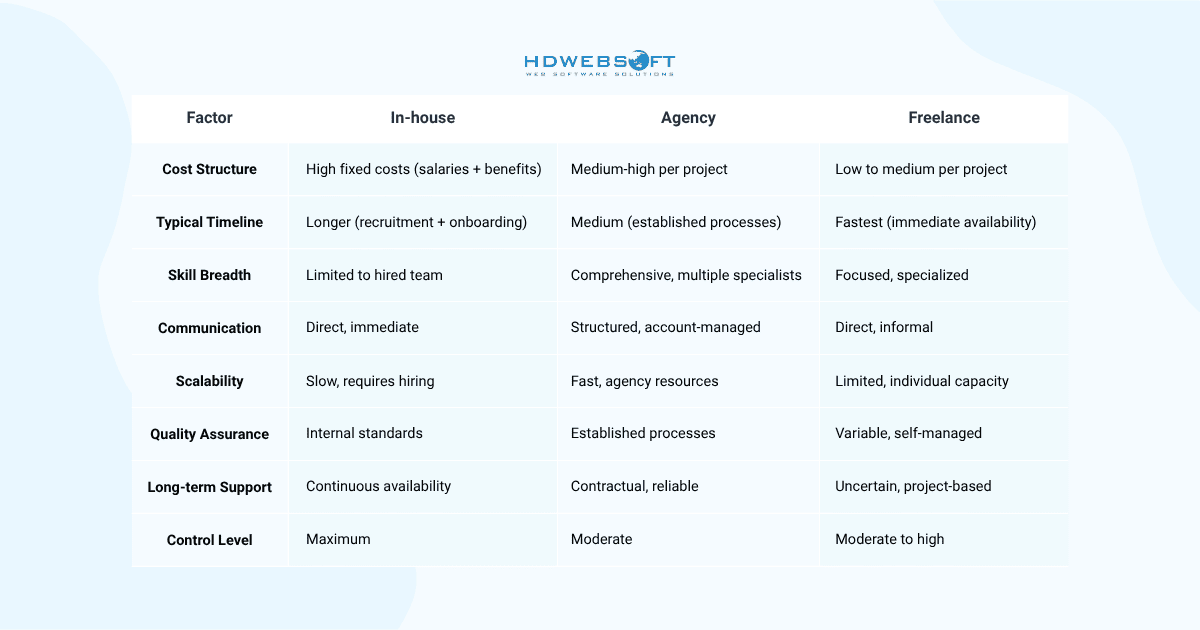
Critical Considerations When Selecting Your Web Development Model
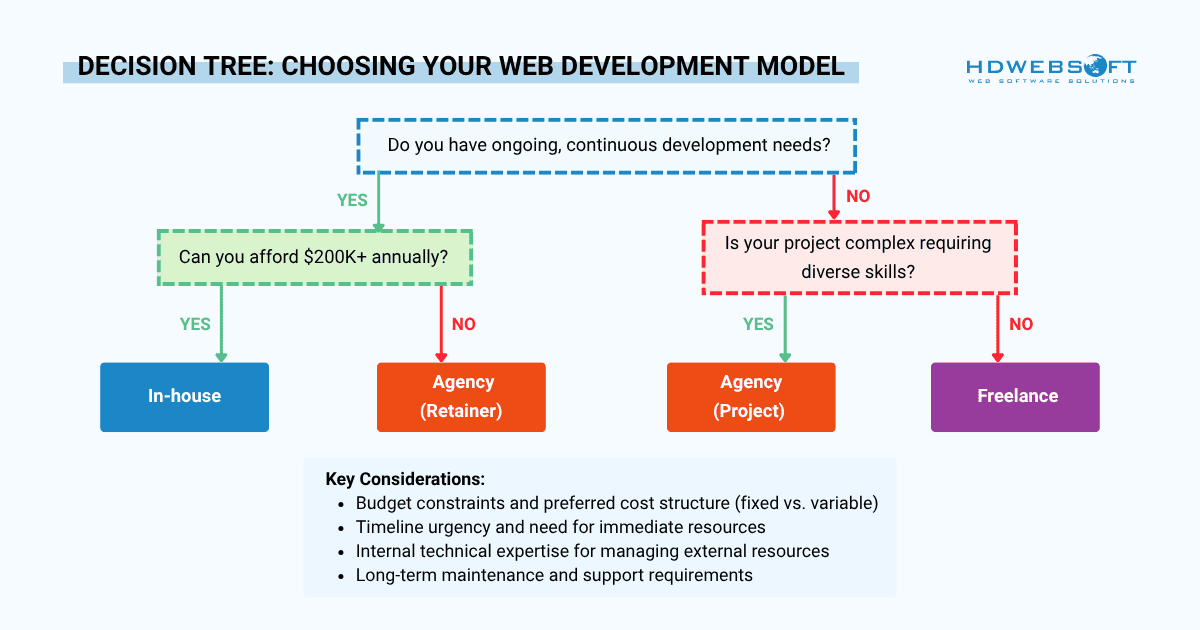
decision flow for choosing a Web Development Model
Beyond the surface-level comparison of costs and capabilities, several deeper factors should guide your choice of web development model. These considerations often prove more decisive than initial price tags. They will determine whether your chosen approach will truly serve your business objectives over time.
Project Scope and Complexity
The complexity and scale of your initiative significantly influence which website development model makes sense. Simple websites or straightforward applications might not justify agency or in-house investments. Concurrently, comprehensive platforms with multiple integrations, user types, and business logic typically require the robust capabilities that teams provide.
Consider not just the initial build but the ongoing evolution. Projects requiring continuous enhancement favor models that provide sustained access to development resources rather than one-time builds.
Budget Constraints and Cost Preferences
Financial resources and preferred cost structures guide selection substantially. Organizations with capital for permanent team-building but wanting to avoid variable project costs lean toward the in-house model. Conversely, businesses that prefer to pay only for active development without ongoing salary obligations favor the agency web development model or the freelance model.
Consider the total cost of ownership beyond initial development. Ask yourself which model’s long-term maintenance and update costs align with your financial planning?
Timeline Requirements and Urgency
Time pressure affects model selection differently. When speed matters most, freelancers often start immediately, while agencies mobilize quickly with established teams. However, the in-house model requires recruitment time upfront but provides faster response for subsequent projects once teams are established.
Projects with flexible timelines can accommodate hiring processes. However, urgent initiatives demand immediately available resources that only agencies and freelancers provide.
Ongoing Maintenance Needs

Ongoing Maintenance Needs
Consider what happens after launch. Websites and applications require updates, bug fixes, security patches, and feature additions long after initial deployment. The in-house website development model ensures developers remain available for these ongoing needs without renegotiation.
The agency web development model typically offers maintenance contracts with defined service levels. All the while, freelancers may or may not be available when future needs arise. Platforms requiring frequent updates or 24/7 support strongly favor models providing guaranteed long-term access to technical resources.
Hybrid Approaches: Combining Models Strategically
Rather than forcing yourself into a single category, many successful organizations discover that blending different models creates optimal outcomes. This strategic mixing allows businesses to capture the best aspects of each approach while minimizing their respective drawbacks. Ultimately, it’ll create customized solutions that pure models cannot achieve.
When Mixing Models Makes Sense
Smart organizations increasingly recognize that these models aren’t mutually exclusive. Combining approaches strategically leverages each model’s strengths while mitigating weaknesses.
For example, maintaining a small in-house website development model core team for strategic work. Meanwhile, agencies’ supplement is for specialized projects or capacity surges, providing flexibility without excessive fixed costs.
Similarly, businesses might use the freelance web development model for specific technical challenges while relying on agencies for comprehensive initiatives.
When to Use The Hybrid Approach
This hybrid approach works particularly well during transitions. Companies scaling up might start with freelancers, graduate to agencies as needs grow. Then, they eventually build in-house teams as volume justifies permanent staff. Conversely, enterprise downsizing might maintain core in-house capabilities while increasingly leveraging external resources for non-critical work.
The key involves clearly defining which work stays internal versus external. It’ll ensure proper coordination between resources and managing relationships with multiple development sources simultaneously without creating conflicts or inefficiencies.
Conclusion
Ultimately, no single web development model reigns supreme across all situations. The right choice depends entirely on your specific circumstances, priorities, and constraints. Rather than viewing this as a permanent decision, consider your current situation while remaining open to evolution as your needs change. Whatever path you choose, understanding these fundamental differences ensures your chosen model aligns with your business objectives, setting the foundation for digital success.
If you’re looking for a reliable partner to bring your web vision to life, HDWEBSOFT offers comprehensive website development services that combine technical excellence with a client-centric approach. With a clean data-driven approach and affordable, reliable services, we help businesses scale up and stay competitive in today’s digital landscape. Explore our website development services to discover how we can support your next project.










